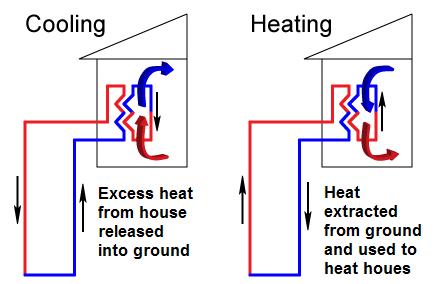Heat Pumps - Reviews, Prices and More!
Geothermal Heat Pumps: Let's Get Down To Earth: Fact Sheet On Geothermal Heat Pumps

OK, I know what you are thinking: "What are Geothermal Heat pumps?" Well, let's use a simple illustration: Take a piping hot cup of coffee and let it sit for 15-20 minutes. Taste it. What has happened? We would say that it 'cooled off.' But what REALLY happened? Actually, what happened was that the heat in the hot cup of coffee 'transferred' to the cup and to the surrounding air. But suppose we reverse that: what if we devise a machine that would take a cold cup of coffee, extract the heat from the air surrounding it, and pump it into the coffee. What would happen? The coffee would get hot. This is exactly what geothermal heat pumps do: it "pumps" the heat - it moves it in a certain way.
So, if geothermal heat pumps are to work, they must have a source of heat: either the surrounding air or --- in the case of geothermal heat pumps, the source of the heat is the heat from the ground or soil (we sometimes call them 'ground source heat pumps').
Heat pumps can also be used to cool -- and the most familiar example of one is right in everyone's home: a refrigerator. It contains machinery that cools (removes heat) from the interior of the refrigerator, thereby keeping the food stored inside cool.
Some other examples of heat pumps: furnaces (some types), air conditioners, water heaters - there are even swimming pool heat pumps!
Some heat pumps are called air-source heat pumps, so called because they exploit the differential (difference) between the temperature of the air outdoors and the air temperature indoors. These heat pumps can be used to either heat or cool a building.
